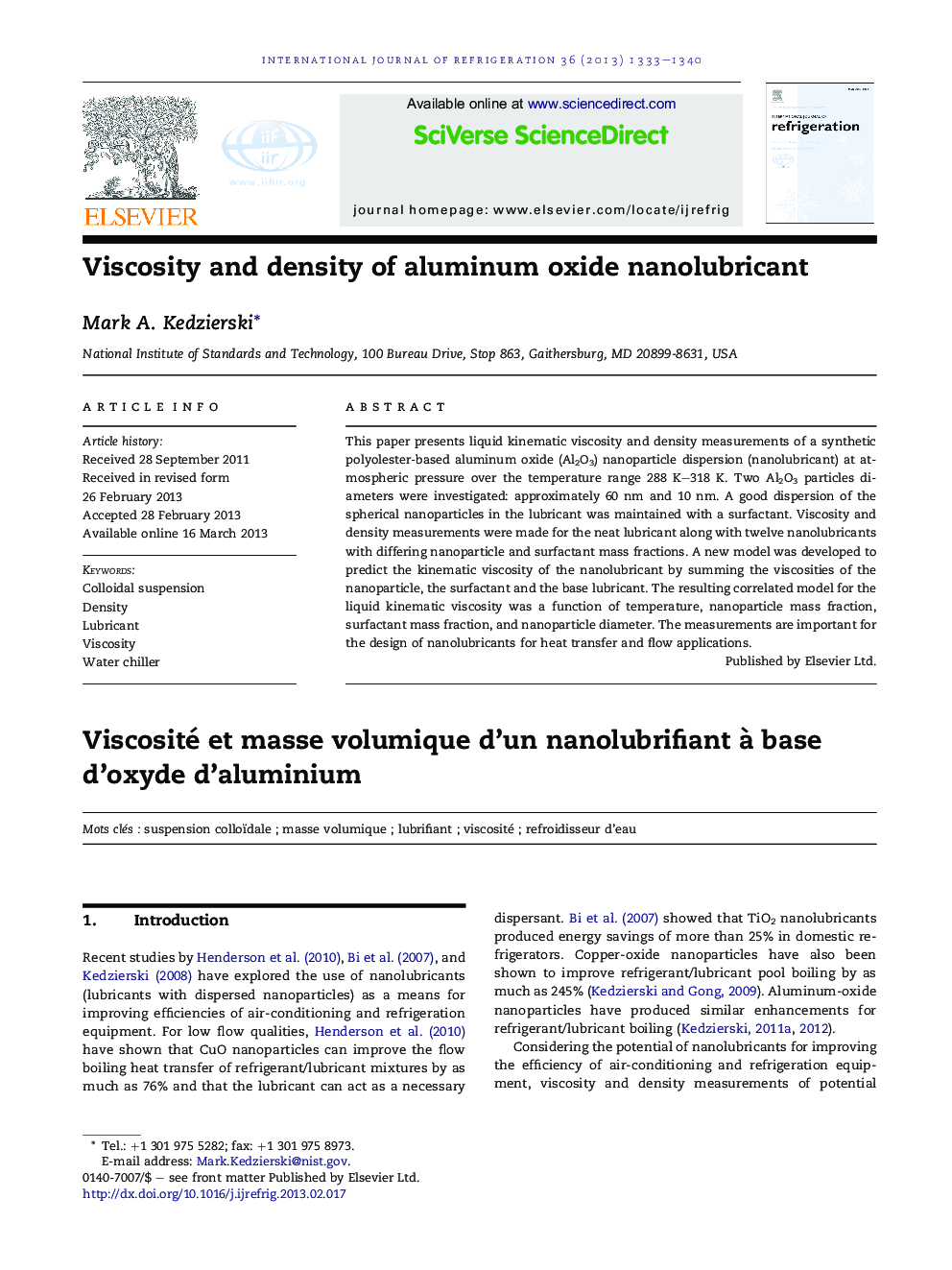| Article ID | Journal | Published Year | Pages | File Type |
|---|---|---|---|---|
| 789469 | International Journal of Refrigeration | 2013 | 8 Pages |
•Viscosity and density measurements of nanolubricant for water chillers were presented.•New model captures the effects of nanoparticle size, nanoparticle and surfactant mass fraction, and temperature.•Viscosity equation developed using nanoparticle size dependent pseudo surfactant and pseudo nanoparticle viscosities.•Surfactant caused the viscosity of the nanolubricant to either increase or decrease depending on temperature.
This paper presents liquid kinematic viscosity and density measurements of a synthetic polyolester-based aluminum oxide (Al2O3) nanoparticle dispersion (nanolubricant) at atmospheric pressure over the temperature range 288 K–318 K. Two Al2O3 particles diameters were investigated: approximately 60 nm and 10 nm. A good dispersion of the spherical nanoparticles in the lubricant was maintained with a surfactant. Viscosity and density measurements were made for the neat lubricant along with twelve nanolubricants with differing nanoparticle and surfactant mass fractions. A new model was developed to predict the kinematic viscosity of the nanolubricant by summing the viscosities of the nanoparticle, the surfactant and the base lubricant. The resulting correlated model for the liquid kinematic viscosity was a function of temperature, nanoparticle mass fraction, surfactant mass fraction, and nanoparticle diameter. The measurements are important for the design of nanolubricants for heat transfer and flow applications.
